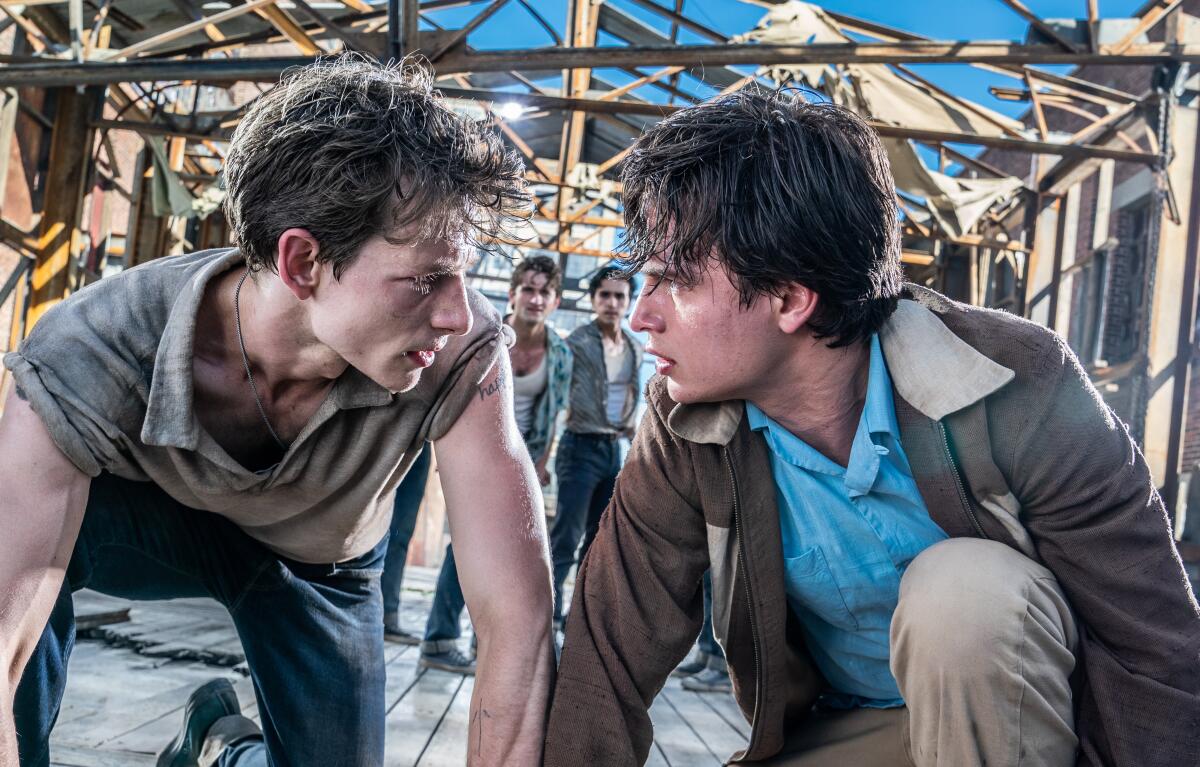How Janusz Kaminski found beauty in tragedy

- Share via
There’s a rhythmic dance in the visual language of Steven Spielberg’s “West Side Story” that pulsates with energy. The camera glides through the twirling choreography inviting us to participate, while color, mood and texture honor a lighting style reminiscent of old Hollywood. “It’s a very beautiful story with a dramatic twist,” says cinematographer Janusz Kaminski. “We were making a live version of a Broadway show that needed to look glamorous and enticing.” In a pivotal scene atop a broken bridge, Tony (Ansel Elgort) and Riff (Mike Faist) fight over a gun. The cinematographer enhanced their performance by embracing the location’s bright sunlight and shadows with painterly detail. “Steven is a master of composition and camera movement. It’s one of the most balletic sequences without it feeling like a musical,” Kaminski notes. “The moment is very dynamic and foreshadows what’s going to happen later on in the movie”: an iconic and tragic ending.
More to Read
From the Oscars to the Emmys.
Get the Envelope newsletter for exclusive awards season coverage, behind-the-scenes stories from the Envelope podcast and columnist Glenn Whipp’s must-read analysis.
You may occasionally receive promotional content from the Los Angeles Times.










